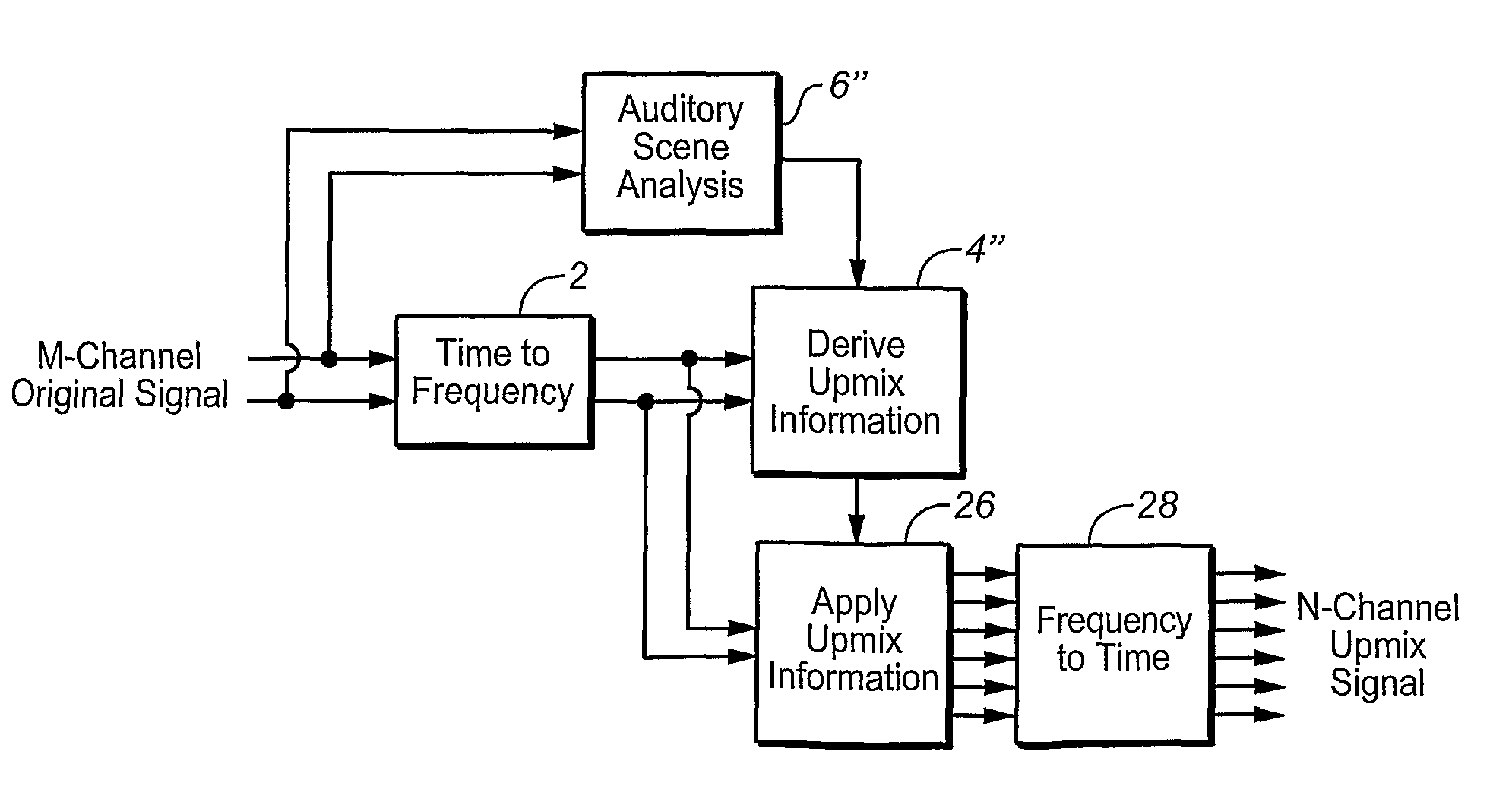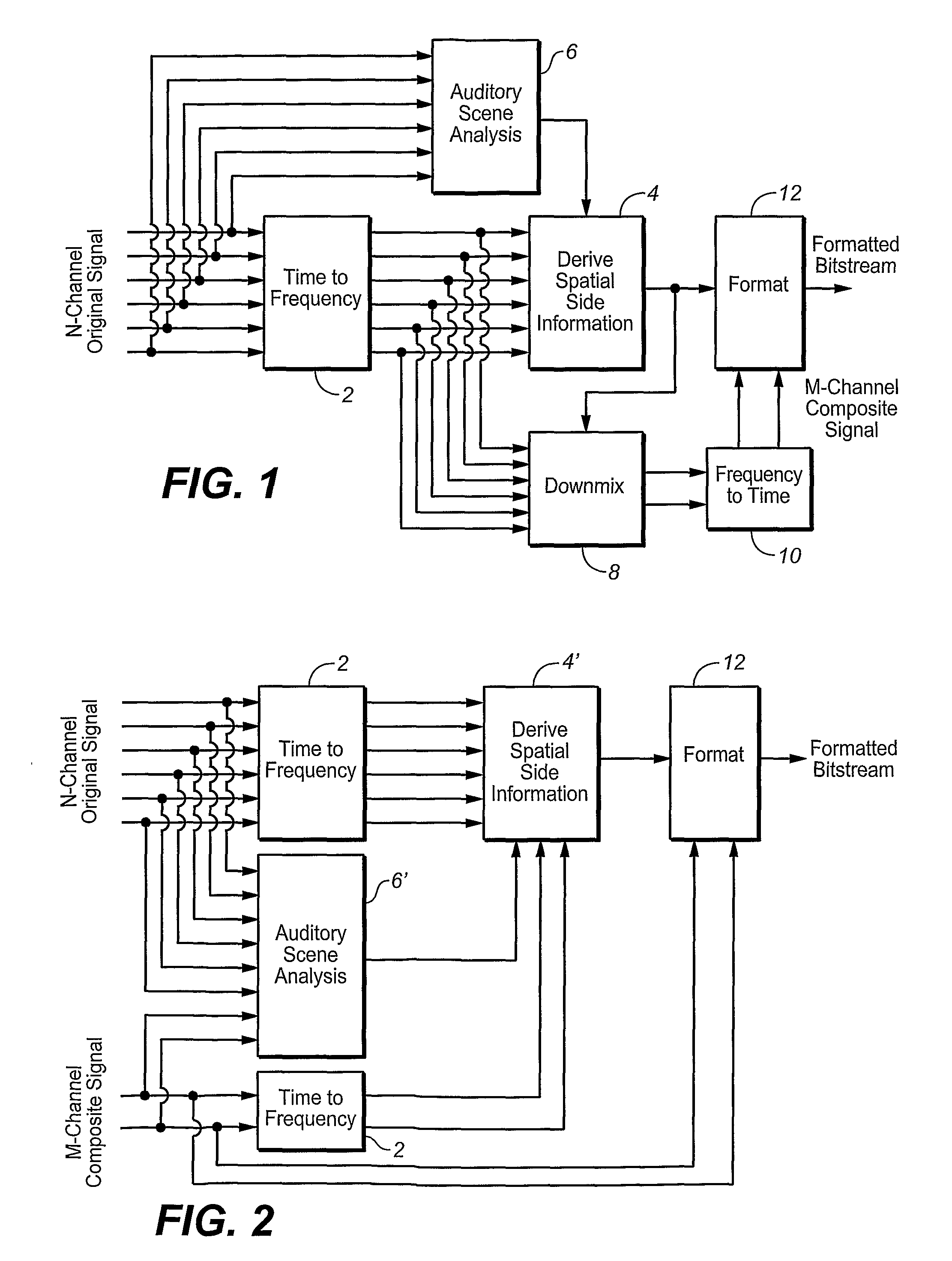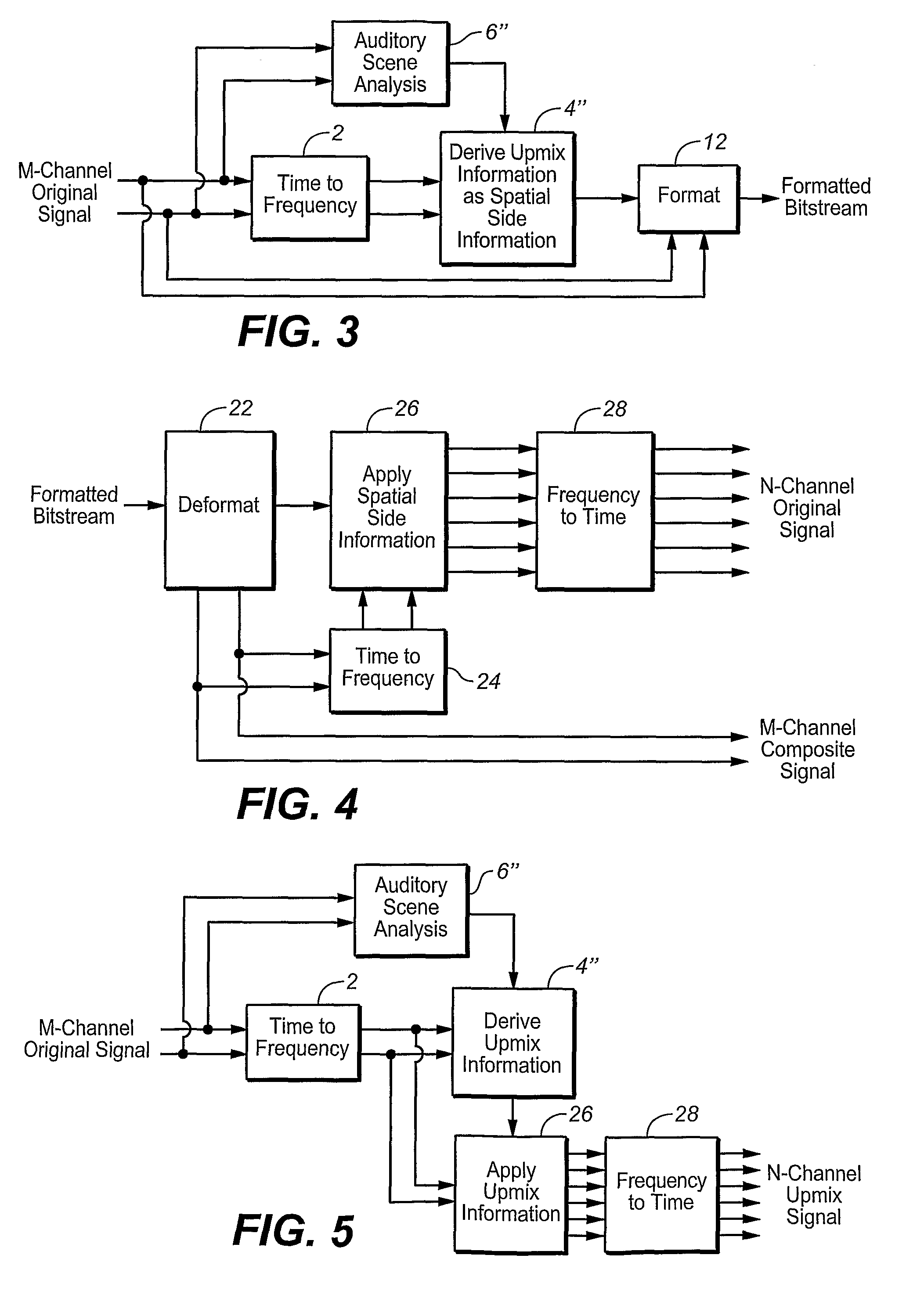Controlling Spatial Audio Coding Parameters as a Function of Auditory Events
a spatial audio and coding parameter technology, applied in the field of audio encoding methods and apparatus, can solve the problems of computational complexity, specialized techniques for sound separation, and the practicability of auditory scene analysis, and achieve the effect of reducing the number of instruments and reducing the number of nois
- Summary
- Abstract
- Description
- Claims
- Application Information
AI Technical Summary
Benefits of technology
Problems solved by technology
Method used
Image
Examples
Embodiment Construction
[0022]Some examples of spatial encoders in which aspects of the invention may be employed are shown in FIGS. 1, 2 and 3. Generally, a spatial coder operates by taking N original audio signals or channels and mixing them down into a composite signal containing M signals or channels, where M<N. Typically N=6 (5.1 audio), and M=1 or 2. At the same time, a low data rate sidechain signal describing the perceptually salient spatial cues between or among the various channels is extracted from the original multichannel signal. The composite signal may then be coded with an existing audio coder, such as an MPEG-2 / 4 AAC encoder, and packaged with the spatial sidechain information. At the decoder the composite signal is decoded, and the unpackaged sidechain information is used to upmix the composite into an approximation of the original multichannel signal. Alternatively, the decoder may ignore the sidechain information and simply output the composite signal.
[0023]The spatial coding systems pr...
PUM
 Login to View More
Login to View More Abstract
Description
Claims
Application Information
 Login to View More
Login to View More - R&D
- Intellectual Property
- Life Sciences
- Materials
- Tech Scout
- Unparalleled Data Quality
- Higher Quality Content
- 60% Fewer Hallucinations
Browse by: Latest US Patents, China's latest patents, Technical Efficacy Thesaurus, Application Domain, Technology Topic, Popular Technical Reports.
© 2025 PatSnap. All rights reserved.Legal|Privacy policy|Modern Slavery Act Transparency Statement|Sitemap|About US| Contact US: help@patsnap.com



